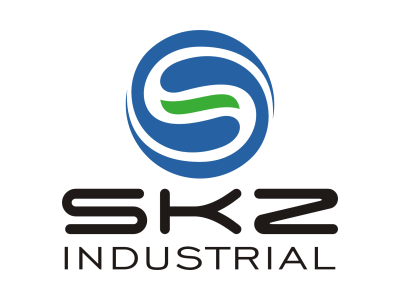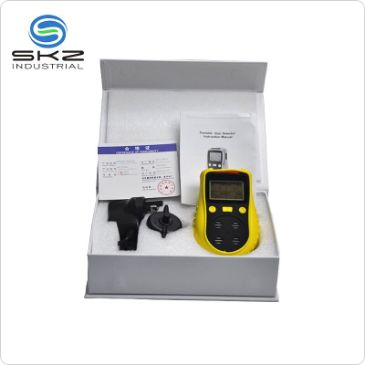Combating Invisible Perils: Hydrogen Sulfide (H₂S) and Carbon Monoxide (CO) with Gas Detectors
Hydrogen Sulfide Exposure Risks and Industrial Sources
Hydrogen sulfide, commonly known as H2S, is a serious hazard across several industrial sectors including oil refineries, wastewater plants, and chemical factories. This gas tends to form when organic materials break down or during processes involving sulfur compounds. When present in small amounts, people can smell it because of its distinctive rotten egg scent. However, after being exposed for too long, our sense of smell gets dulled, making us blind to its presence once concentrations reach around 100 parts per million. That's actually a dangerous threshold since at this level, breathing becomes difficult and someone might lose consciousness very quickly without proper protection equipment.
Why H₂S is a Leading Cause of Gas-Related Fatalities Despite Detection Technology
According to OSHA, 46% of confined space fatalities in 2023 involved H₂S, often due to delayed alarm responses or sensor calibration failures. Even advanced detection systems may underreport concentrations by up to 20% in high-humidity or high-temperature environments due to sensor drift (Ponemon 2023), emphasizing the need for resilient monitoring solutions.
Carbon Monoxide’s Undetectable Toxicity and Common Generation in Combustion Processes
Carbon monoxide sticks to hemoglobin in our blood way more strongly than oxygen does actually about 240 times stronger which means even low concentrations like 35 parts per million can cause serious lack of oxygen in tissues something people just cant detect without those special electrochemical sensors. The majority of carbon monoxide coming out of industries comes from burning stuff in boilers furnaces and engines across various facilities. According to CDC data from 2021 this invisible killer is responsible for roughly 430 worker fatalities every year throughout the United States alone making it a critical safety concern that often goes unnoticed until it's too late.
Case Study: Fatal H₂S Leak in a Chemical Processing Unit
A reactor valve problem back in 2022 caused a dangerous release of hydrogen sulfide at a chemical facility in Texas, with levels spiking to around 1,000 parts per million. Unfortunately, this delay led to three worker deaths. What happened here really highlights why industrial sites need proper real time monitoring equipment equipped with backup sensors. These systems can provide critical early warnings and prevent tragic incidents by ensuring timely evacuation and response, emphasizing the importance of vigilance and up-to-date detection technology.
Methane and Oxygen Depletion: Explosive and Asphyxiating Hazards
Why CH₄ and O₂ Levels Matter – Safety Risks in Industrial Settings
Methane (CH₄) and oxygen depletion present significant safety risks in industrial settings. Methane, known for its volatility, has an explosive potential at concentrations as low as 5% by volume in air, making even small leaks critical hazards. Facilities dealing with natural gas, biogas, or coal especially need constant monitoring systems. For instance, a methane explosion in a Texas compressor room cost over twelve million dollars in repairs. Continuous detection and maintenance of gas levels using effective monitoring systems is crucial to worker safety and operational stability.
Infrared Detection Advantages in Methane Monitoring
When dealing with methane risks, infrared (IR) gas detectors are often preferred. Unlike other sensors, IR detectors aren't compromised by contaminants like silicone vapors. They are particularly suitable for use in methane-rich environments, ensuring reliable performance in oxygen-deficient settings and helping prevent false alarms triggered by contamination or varied weather conditions. For example, following a switch to IR technology in 2018, California landfills experienced a reduction in methane leak incidents by almost two-thirds over five years.
Avoiding Oxygen Depletion in Confined Spaces: Risk and Solution
Use of inert gases like nitrogen or argon in industrial processes can result in oxygen depletion, posing asphyxiation risks in confined spaces. When oxygen levels fall below 19.5%, cognitive functions may be impaired. As recommended by NFPA 350 standards, it is critical to assess oxygen levels in confined spaces and ensure sufficient ventilation is in place. This involves the integration of advanced oxygen sensors and robust safety protocols to avert potential tragedies.
Multi-Gas Detectors for Comprehensive Hazard Identification
Today’s multi-gas detectors combine different sensing technologies to detect a range of toxic and combustible gases simultaneously. These detectors have significantly reduced gas leak incidents at chemical manufacturing facilities by about half. Multi-gas detectors provide broader coverage by identifying hidden threats, such as detecting changes in oxygen levels due to chlorine leaks, proving critical in preventing catastrophic incidents.
Sensor Calibration and High-Humidity Environment Challenges
Calibrating gas sensors in high-humidity environments can pose challenges. Humidity levels above 70% can significantly degrade sensor accuracy, requiring them to be calibrated twice as often compared to drier conditions. To maintain sensor reliability, facilities in tropical climates are increasingly adopting self-calibrating technologies.
Gas Detection Technology: Choosing the Right Gas Detector for Your Facility
Choosing Between Portable and Fixed Gas Detection Systems
Deciding between portable and fixed gas detection systems depends on the day-to-day operational needs and the nature of the worksite. Fixed systems are permanent installations, ideal for continuous monitoring and maintaining a constant guard against potential gas hazards. Meanwhile, portable detectors allow flexibility for workers who need to access different areas of the plant, especially during maintenance operations. The combination of both systems is often recommended to address ongoing background risks and unexpected hazardous scenarios, ensuring comprehensive coverage and safety.
Integrating Sensors with Safety Protocols for Effective Hazard Management
To maximize workplace safety, gas detectors should integrate with robust alarm systems and safety protocols. Facilities that utilize real-time monitoring along with routine maintenance and calibration are better equipped to reduce false alarms and ensure employee safety. When combined, these strategies create a responsive safety network, ready to act promptly in emergency situations, and consistently aligned with guidelines such as the NFPA 350 standards for confined spaces.
Leveraging Historical Data for Future Safety Enhancements
Analyzing historical gas detection data can provide insights into patterns of gas emission spikes, such as the 78% of methane increases that occurred during tank filling operations. By employing predictive analytics, facilities can implement preemptive measures to activate ventilation systems ahead of potential danger, thereby extending equipment lifespan and enhancing workplace safety. The emphasis on such data-driven strategies was highlighted in a Process Safety Journal study from last year.
FAQ
What are the main industrial sources of hydrogen sulfide and carbon monoxide?
Hydrogen sulfide often forms during the breakdown of organic materials or processes involving sulfur compounds, typically found in oil refineries, wastewater plants, and chemical factories. Carbon monoxide is commonly generated in combustion processes such as burning in boilers, furnaces, and engines.
How can exposure to hydrogen sulfide and carbon monoxide be dangerous?
Hydrogen sulfide can be fatal at concentrations reaching around 100 parts per million, whereas carbon monoxide can cause oxygen deprivation at just 35 parts per million by strongly binding to hemoglobin, which impairs oxygen transport in the blood.
Why is proper gas detection crucial in industries working with dangerous gases?
Proper gas detection prevents dangerous gas buildups, reduces false alarms, and ensures a safer workplace. Continuous, real-time monitoring alerts workers to potential hazards, allowing for timely evacuation and intervention, thus significantly reducing the risk of fatal incidents.
What are the benefits of using infrared gas detectors in methane-rich environments?
Infrared gas detectors offer reliable operation in methane-rich environments, as they are not affected by environmental conditions that can impact other sensors, leading to more accurate detection and reduced false alarms. This enhances safety in facilities handling explosive gases.
How can industries manage sensor calibration challenges in high-humidity environments?
In high-humidity environments, it is crucial to implement self-calibrating detectors to maintain sensor accuracy. This mitigates the effects of humidity, which can otherwise degrade traditional sensor accuracy significantly, increasing the risk of undetected hazardous gas levels.
FAQ
What are the main risks associated with hydrogen sulfide exposure?
Hydrogen sulfide is a serious hazard in many industrial sectors and can cause respiratory difficulties and unconsciousness at concentrations around 100 parts per million.
Why is hydrogen sulfide a leading cause of gas-related fatalities?
H₂S leads to many confined space fatalities due to factors like delayed alarm responses or sensor calibration failures, with detection systems struggling under high-humidity or high-temperature conditions.
What are the dangers of carbon monoxide exposure?
Carbon monoxide binds to hemoglobin 240 times more effectively than oxygen, causing oxygen deprivation in tissues even at low concentrations, making it a critical but often undetected safety hazard.
What advantages do infrared gas detectors offer in methane-rich environments?
Infrared gas detectors are effective for methane detection as they can operate reliably even in dusty or oxygen-variable environments, making them a preferred choice for industries handling combustible gases.
Why is consistent gas monitoring important for workplace safety?
Continuous gas monitoring is crucial for early detection of gas leaks, reducing incidents of gas exposure, and maintaining a safer working environment. Regular monitoring allows for proactive safety measures and helps in preventing dangerous situations.
Table of Contents
- Combating Invisible Perils: Hydrogen Sulfide (H₂S) and Carbon Monoxide (CO) with Gas Detectors
-
Methane and Oxygen Depletion: Explosive and Asphyxiating Hazards
- Why CH₄ and O₂ Levels Matter – Safety Risks in Industrial Settings
- Infrared Detection Advantages in Methane Monitoring
- Avoiding Oxygen Depletion in Confined Spaces: Risk and Solution
- Multi-Gas Detectors for Comprehensive Hazard Identification
- Sensor Calibration and High-Humidity Environment Challenges
- Gas Detection Technology: Choosing the Right Gas Detector for Your Facility
-
FAQ
- What are the main industrial sources of hydrogen sulfide and carbon monoxide?
- How can exposure to hydrogen sulfide and carbon monoxide be dangerous?
- Why is proper gas detection crucial in industries working with dangerous gases?
- What are the benefits of using infrared gas detectors in methane-rich environments?
- How can industries manage sensor calibration challenges in high-humidity environments?
-
FAQ
- What are the main risks associated with hydrogen sulfide exposure?
- Why is hydrogen sulfide a leading cause of gas-related fatalities?
- What are the dangers of carbon monoxide exposure?
- What advantages do infrared gas detectors offer in methane-rich environments?
- Why is consistent gas monitoring important for workplace safety?

